Underwater Search and Evidence Response Team (USERT): Tools of the Trade
About This Series
This list is part of a series giving you an inside look at USERT—from their rigorous training to tools of the trade.
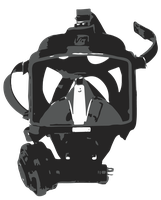 AGA Full Face Mask
AGA Full Face Mask
This mask is the most popular mask for commercial and military diving and is equipped with:
- Oral-nasal cavity: The regulator on the side allows air to enter from the left and bubbles to exit on the right.
- Valsalva capability: This qualizes ears during a dive.
- Two earbuds: Located on either side of the mask, they allow for communication with other team members.
- Built-in snorkel: These can be used for searching along the water’s surface.
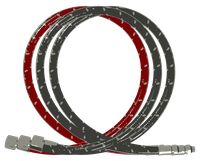 Air Supply Hose
Air Supply Hose
Divers receive air via a hose connected to an air compressor on the surface. This direct air source offers a potentially unlimited air supply to the diver.
The air supply hose is part of a three-hose, color-coded cord that offers additional amenities:
- Black hose: This carries air.
- Second black hose: This pneumofathometer, or depth gauge, lets team members on the surface always know divers’ depths.
- Red hose: This carries communications wires.
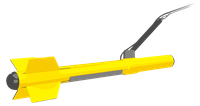 Sonar Tools
Sonar Tools
- Sector scan sonar on a tripod with GPS grid: Provides 360-degree analysis of the bottom composition up to 300 feet. It sends a signal to computers on the surface, and the surface team directs the divers where to search.
- Side scan “Towfish” unit: This torpedo-like sonar is designed to be towed behind or alongside a boat to cover wider search areas.
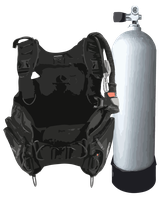 Buoyancy Devices
Buoyancy Devices
The following devices help control buoyancy, as well as offer an extra air supply:
- Buoyancy compression (BC) device: A vest-like device with a wing on the back that can be manually inflated or deflated to control buoyancy; also contains removable weight pouches. When diving with surface-supplied air, the diver’s emergency tank connects to the BC.
- Emergency tank: An aluminum cylinder that weighs 32 pounds and contains 80 cubic feet of gas (21% oxygen) under 3,000 pounds per square inch of working pressure. This tank provides about 30 minutes of air to use in case of emergency.
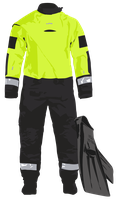 Dry Suit and Fins
Dry Suit and Fins
- Dry suit: Designed to keep out water and provide thermal insulation, dry suits also protect divers from chemical and environmental hazards. Made primarily with vulcanized rubber, up to three layers of clothing can be worn underneath the dry suit, depending on the water temperature and diving location. The dry suit seals for a water-tight fit. Dry suits usually cover the head, body, and feet, but separate dry gloves may be used to specifically protect hands.
- Fins: Made from hard rubber, fins are equipped with spring snaps or quick-release units in the back for easy entry and removal. Fins are generally used when divers operate in stronger currents.
 Munson Boat
Munson Boat
This boat acts as the primary dive platform for USERT. It is equipped with a dive door for easy on/off access for divers and has a crane-like device called a davit that allows the boat to winch a large remotely operated vehicle (ROV) on and off the deck.
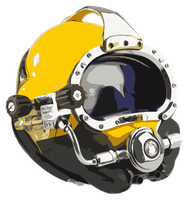 Kirby Morgan Superlite 77 Helmet
Kirby Morgan Superlite 77 Helmet
This standard commercial steel diving helmet weighs about 30 pounds on the surface. Features include:
- Block: This allows the diver to switch from surface air to emergency gas supply carried in the tank on their back.
- Block switch: The switch ventilates the helmet and prevents deadly carbon dioxide buildup; it also functions like a portable air-conditioning unit to cool the diver’s face.
- Nose piece: This allows the diver to clear their ears while descending to equalize the air pressure in the ear canal.
- Regulator: This uses a venturi switch to adjust air intake.
- Quad valve exhaust: This allows air bubbles to exit the helmet when the diver exhales.
- Inside helmet: This includes a blue hood designed for a comfortable fit.
- Ear speakers: This enables communication between the surface team and fellow divers.
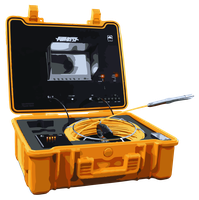 Light and Camera System
Light and Camera System
Lights and recording functions are controlled from the surface, and high-definition images are displayed on surface monitors. However, divers rarely use lights below the surface because particulate matter churned up from walking on the bottom diffuses any light.
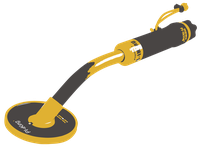 Metal Detectors
Metal Detectors
Different sizes of underwater metal detectors allow divers to locate large and small objects.
 Lift Bags
Lift Bags
Divers are prohibited from lifting anything above 15 pounds by themselves. Lift bags inflate to lift objects as large and heavy as 2,000-pound vehicles. Bags are inflated either by divers or, for larger items, by surface-supplied air.
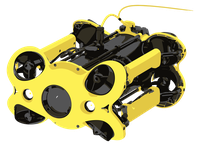 Underwater Vehicles
Underwater Vehicles
- Remotely operated vehicle (ROV): Units come in various sizes and are generally equipped with thrusters, lights, a camera that can transmit high-definition images directly to the surface, and an “articulator” or manipulator that can grab small objects.
- Autonomous underwater vehicle (AUV): Underwater robots are programmed for specific search patterns. An AUV can dive and execute its search mission without physical contact from the operator. It stores the data it collects underwater. At the end of a dive, the operator can download the data.
Note: These photos of diving tools are provided as examples and may not be exact replicas of what the FBI dive team uses.



